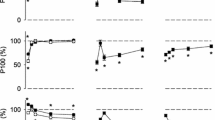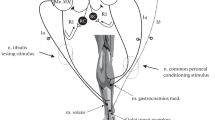Abstract
A group of 90 male paraplegics were studied to determine the optimal training protocol for isokinetic exercise induced by functional electrical stimulation of the quadriceps muscles. The parameters that were varied were the number of training sessions a week, the length of the training sessions each day, and the work-rest intervals in each training session. Training for 3 days a week for 30 min a day with 6 s of exercise and 6 s of rest proved the optimal protocol. Training for 5 days or for 1 day a week was not as effective in training strength or endurance. A combination of 50% work and 50% rest produced a much greater gain in strength and endurance than work:rest ratios of 66%:33% or 25%:75%. When training was conducted for 5 min, 15 min or 30 min each day, the greatest increase was found when the muscles were exercised for 30 min each day. While more variables need to be examined, this study has provided some initial guidelines for isokinetic training of humans using electrical stimulation.
Similar content being viewed by others
Author information
Authors and Affiliations
Additional information
Accepted: 9 April 2000
Rights and permissions
About this article
Cite this article
Petrofsky, J., Stacy, R. & Laymon, M. The relationship between exercise work intervals and duration of exercise on lower extremity training induced by electrical stimulation in humans with spinal cord injuries. Eur J Appl Physiol 82, 504–509 (2000). https://doi.org/10.1007/s004210000235
Issue Date:
DOI: https://doi.org/10.1007/s004210000235




